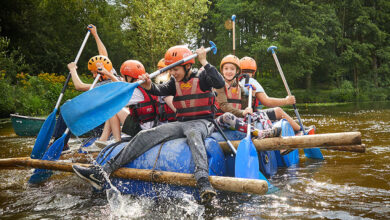Lockdown sparked an appetite for videos; homework must reflect this
Editorial Feature

People are using screens more than ever before and more than half of students want to maintain this in the future
The findings from Ofcom’s research suggest it would be foolish to retreat from some of the learning methods used during the home learning of the last 18 months. Teacher Andrew Walls, assistant principal at Sidney Stringer Multi Academy Trust in Coventry, discusses how he uses video content to ignite the imagination and critical thinking of his pupils.
Andrew says: “We all know that students learn best when teachers harness social practices, and especially today our students’ preferred way of accessing and processing information is through videos, such as on YouTube, TikTok and Instagram, all of which revolve around short, snappy videos they can access on demand anywhere they go.”
These platforms are so popular partly because young people who visualise (or internalise) information are far more likely to retain it and be able to apply it in a meaningful and relevant way. Andrew often asks his students to watch short videos as part of their homework. They can be used as a springboard for broader and more in-depth discussions when they return to the classroom, as they provide students with a strong foundation for learning, or to consolidate learning already done.
Videos are effective at creating a mental connection between existing knowledge, and the knowledge being taught. They can help to bolster the teaching of almost every subject. Often the challenge is sourcing appropriate, curriculum aligned content on YouTube.
Some video providers, such as ClickView are aligned directly with the curriculum, which means you are always assured the video content you set as homework will support and enrich your wider teaching objectives and any exams your students will be expected to take.
For example, clippings of news coverage of the vaccine can support science classes, while news segments covering recent developments in acceptance of same-sex marriage could be an interesting watch as part of religious education homework. These will help students think critically and independently about their subjects and how the world is responding to topics they’re learning.
Andrew said: “I have found students respond well to videos being set as homework because they offer an opportunity to learn at their own pace. Students can pause at vital points, rewind and replay as many times as they need. Videos allow students to consider what they need to consolidate learning and offer a counter narrative to competing with their peers and trying to finish tasks as quickly as possible. The questions students ask when you discuss the video later in class are also very valuable. They reflect how well students have understood topics independently, where they need support and where learning gaps exist.”
Videos inspire students, too. For example, when teaching about rights and freedoms in subjects such as world issues, history, politics, PSHE or philosophy, you might want to set watching videos of current events as homework. This will not only help nurture the imagination of students, but also it will inspire them to critically assess their own rights and possibly act to protect them.
To see your company in any upcoming features we are arranging please email editorial@hurstmediacompany.co.uk






